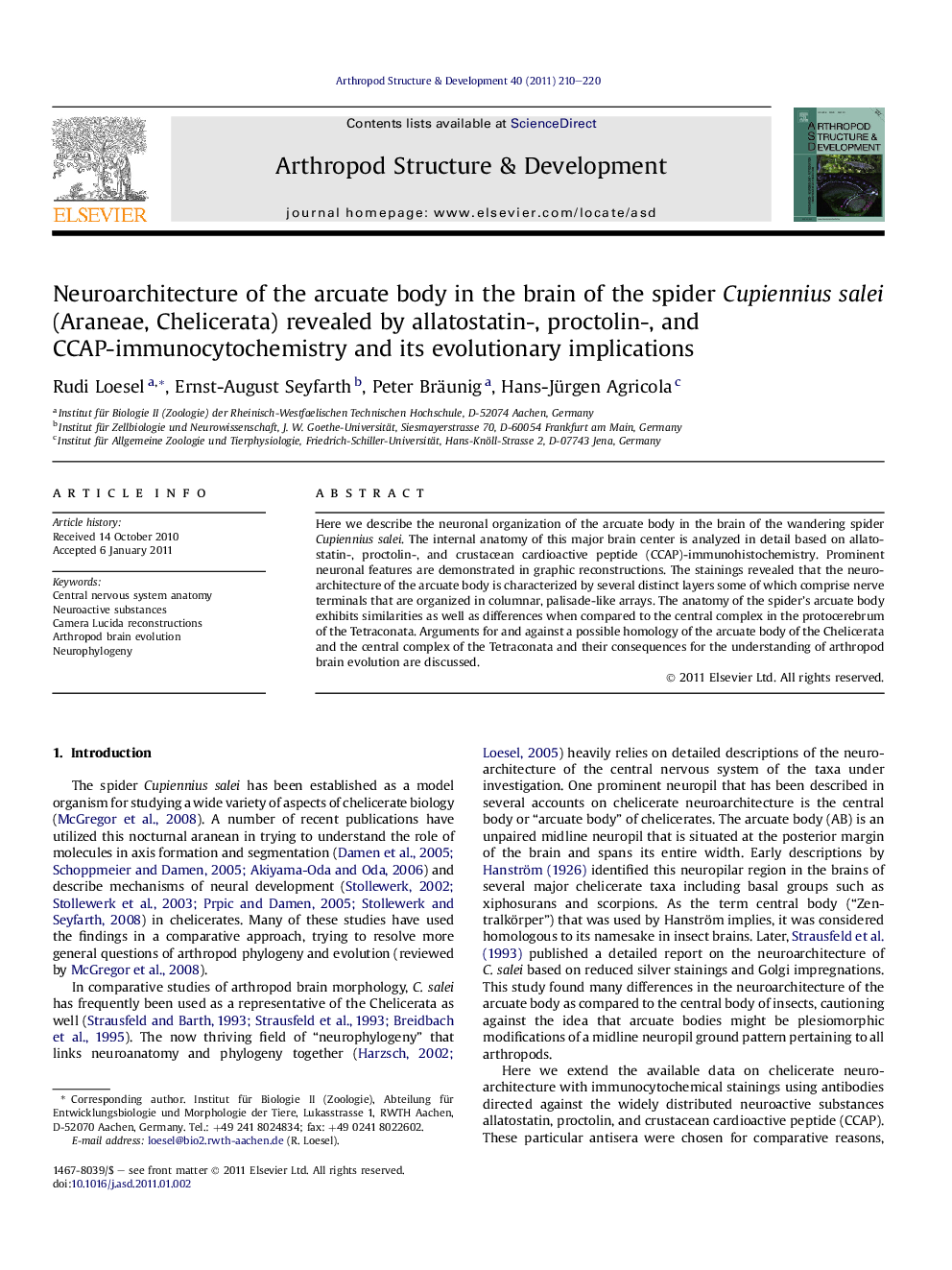| Article ID | Journal | Published Year | Pages | File Type |
|---|---|---|---|---|
| 2778781 | Arthropod Structure & Development | 2011 | 11 Pages |
Here we describe the neuronal organization of the arcuate body in the brain of the wandering spider Cupiennius salei. The internal anatomy of this major brain center is analyzed in detail based on allatostatin-, proctolin-, and crustacean cardioactive peptide (CCAP)-immunohistochemistry. Prominent neuronal features are demonstrated in graphic reconstructions. The stainings revealed that the neuroarchitecture of the arcuate body is characterized by several distinct layers some of which comprise nerve terminals that are organized in columnar, palisade-like arrays. The anatomy of the spider’s arcuate body exhibits similarities as well as differences when compared to the central complex in the protocerebrum of the Tetraconata. Arguments for and against a possible homology of the arcuate body of the Chelicerata and the central complex of the Tetraconata and their consequences for the understanding of arthropod brain evolution are discussed.
► We describe the neuronal organization of the brain of the spider Cupiennius salei. ► The neuroanatomy of the arcuate body is analyzed in detail using immunocytochemistry. ► Antibodies directed against allatostatin, proctolin, and CCAP were applied. ► The arcuate body shows similarities with the central body of insects and crustaceans. ► Implications for our understanding of arthropod brain evolution are discussed.
